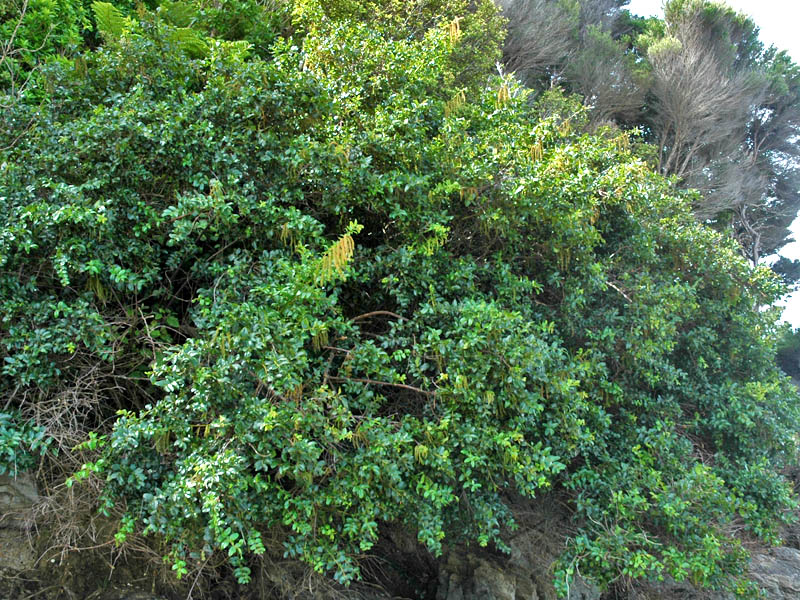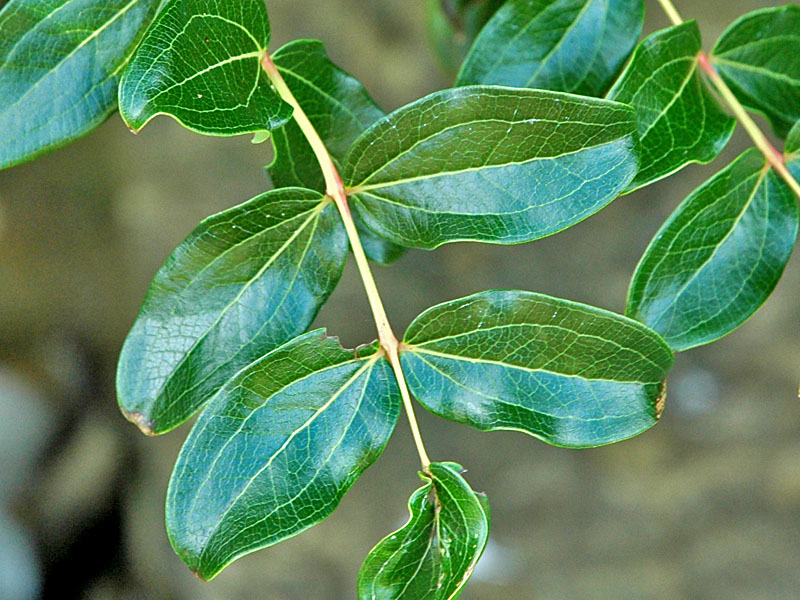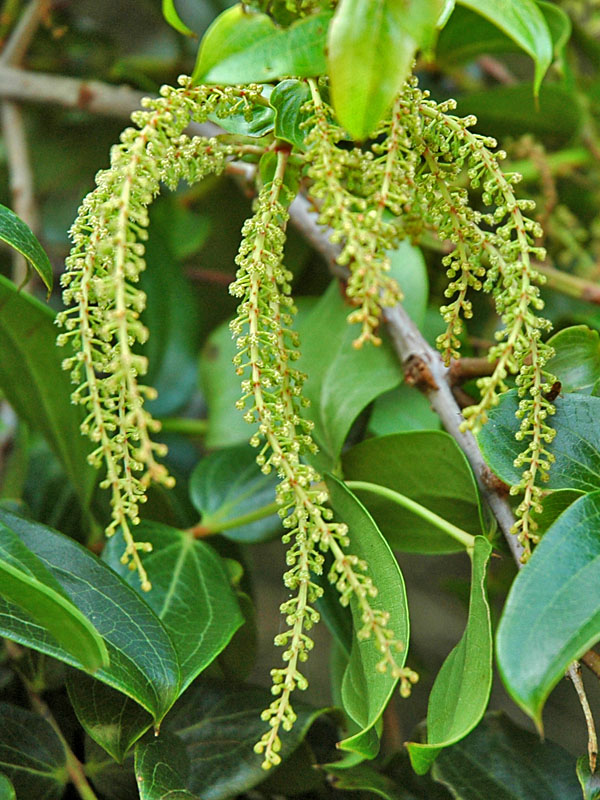
Tropicals, Woody > Coriaria > Coriaria arborea > Coriaria arborea
Coriaria arborea
Tutu, Tree Tutu
Origin: Native to New Zealand and the Chatham Islands.
Mike's
Opinion


"
This is a poisonous dicotyledonis shrub or small irregular tree. It is one of six native New Zealand species commonly called Tutu.
Michael Pascoe, NDP., ODH., CLT., MSc. (Plant Conservation)
"
| Family |
| Coriariaceae |
| Genus |
| Coriaria |
| Species |
| arborea |
| Category |
| Tropicals, Woody |
| Type |
| Tree (evergreen), Shrub (evergreen) |
| Pronunciation |
| USDA Hardiness Zone |
| 8-11 |
| Canadian Hardiness Zone |
| 8a (Possibly hardy in this zone but not proven.) |
| RHS Hardiness Zone |
| H4 |
| Temperature (°C) |
| -5 |
| Temperature (°F) |
| 23 |
| Height |
| 8 M |
| Spread |
| 5 M |
Photographs
Description and Growing Information
Flowering Period
| General Description |
| Sub canopy, tropical, softwood shrub or small tree. Leaves are glossy green with no autumn colour. Flowers are drooping racemes and creamy pink in colour. Fruit is glossy dark purple. |
| Landscape |
| Found in river floodplains, volcanic detritus and glacial moraines. |
| Cultivation |
| Grows naturally in full sun to partial shade. |
| Shape |
| Varies from a shrub to small tree with an arching growth habit. |
| Growth |
| Medium |
| ID Characteristic |
| Tutu has pinnate leaves on long arching branches and long drooping racemes with glossy dark purple to black fruit. |
| Pests |
| Pseudocoremia suavis (Common Forest Looper) and Pyrgotis plagiatana (Leafroller) cause minimal damage feeding on leaves and stems. |
| Habitat |
| Tutu tolerates a wide range of conditions, from infertile dry to moist sites. It can be found in river floodplains, volcanic detritus, and glacial moraines from frostless coastal climates to inland where light frost occurs. |
| Bark/Stem Description |
| The stems are slender and the bark is not obvious. It's brown in colour with pithy stems. |
| Leaf Description |
| The leaf is acute and ovate, glossy green and elliptical. It is dull on the underside. They are approximately 5 cm long and lacking a leaf stalk. There is no autumn colour. |
| Flower Description |
| The flowers are creamy pink in colour and are present in spring and summer. They are located along the stems in axillary racemes. Flowers are in drooping spikes (racemes) from 15-30 mm long. There are 5 fleshy glossy dark purple-black petals that surround the ring of carpals around a narrow columnar receptacle. |
| Fruit Description |
| There is 155 fruit per raceme, 4.5 mm in diameter. They are glossy, dark purple to black in colour. The achenes are flattened,1.3 mm in length and .87 mm in width with 5 per fruit. Fruit is present in summer and autumn. |
| Texture Description |
| The texture is medium all year. |
| Notable Specimens |
| The first specimen was collected in 1769 by Joseph Banks and Daniel Solander. It can be seen at the TePapa Museum of New Zealand. |
| Propagation |
| It can germinate within a week in warm, moist and well lit conditions if shed in summer. It's slower to germinate in deeper soil and dark conditions. |
| Ethnobotanical Uses (Disclaimer) |
| All parts of the plant are poisonous except for the fleshy petals surrounding seeds, Tutin is a neurotoxin that attacks the muscular and vascular system. The poison causes nausea, vomiting, blurred vision, weakness, seizures, convulsions or death. The Maori people collected the juice from Tutu, boiled and mixed it with seaweed to make jelly. Once it is fermented it was used as a laxative. Stems were hollowed out and used for flutes. Leaves were used to dress wounds, and made into lotion used topically on abrasions. There are claims Tutin cured epilepsy and insanity. Dyes were extracted from the bark and soot from burning the wood, mixed with oils and used for tattoos or face paint. |


